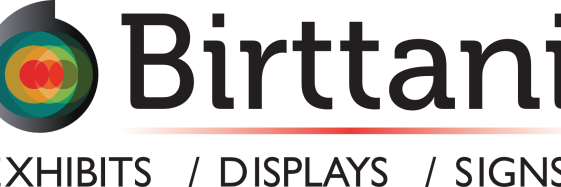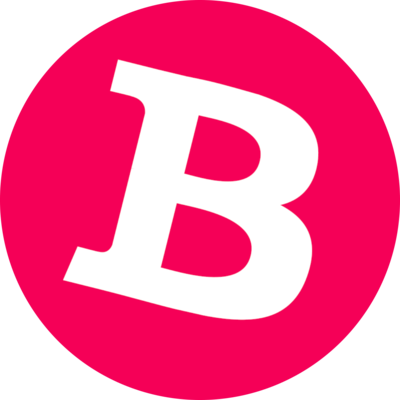
In the bustling environment of trade shows, where hundreds of booths compete for attention, a well-designed display can make or break your brand’s impact. A visually striking booth not only draws attendees but also communicates professionalism and credibility. Among the tools available, backlit backdrops stand out for their ability to enhance visibility and create a memorable presence. This article serves as a definitive guide to selecting, designing, and utilizing backlit backdrops to elevate your booth and achieve your event goals.
Section 1: Understanding Backlit Backdrops
1.1 What is a Backlit Backdrop?
A backlit backdrop is a display system combining a sturdy frame, a printed fabric or vinyl graphic, and integrated LED lighting to illuminate the design from behind. Unlike standard backdrops, which rely on ambient or external lighting, backlit versions use internal LEDs to create a vibrant, glowing effect that enhances visibility.
Key Difference: Standard backdrops can appear flat or dim in low-light settings, while backlit backdrops maintain consistent brightness, ensuring your booth stands out even in crowded or poorly lit venues.
1.2 Benefits of Backlit Backdrops
Enhanced Visibility: The glowing effect cuts through visual clutter, making your booth noticeable from a distance.
Professional Aesthetic: Backlit displays convey modernity and sophistication, aligning with premium brand identities.
Versatility: Easily customizable for different events, products, or campaigns.
Reusability and Portability: Durable materials and modular designs allow for repeated use and easy transport.
1.3 Common Applications
Backlit backdrops are versatile tools used in:
Trade Shows and Exhibitions: Highlighting products or services in high-traffic settings.
Retail Displays: Creating eye-catching in-store promotions.
Corporate Events: Enhancing keynote stages or networking areas.
Photography and Media: Providing professional backdrops for interviews or photo ops.
Section 2: Designing an Effective Backlit Backdrop
2.1 Key Design Considerations
Size and Scale: Match the backdrop to your booth’s dimensions (e.g., 10x10 ft or 20x20 ft). Oversized backdrops can overwhelm smaller spaces, while undersized ones may lack impact.
Material Selection: Stretch fabrics are lightweight and seamless, while vinyl offers durability for high-traffic events.
Lighting Intensity: Opt for adjustable LED systems to control brightness. Warm (3000K) or neutral (4000K) color temperatures create inviting ambiance.
2.2 Visual Design Best Practices
High-Resolution Graphics: Use images with at least 150 DPI to ensure crisp visuals when illuminated.
Color and Contrast: Bold colors and high-contrast designs (e.g., white text on dark backgrounds) maximize readability.
Minimalist Approach: Avoid overcrowding with text or logos. Focus on one key visual or message.
Branding: Incorporate your logo, tagline, and brand colors consistently to reinforce identity.
2.3 Content and Messaging
Clear Text: Use concise phrases (e.g., “Discover Our Latest Innovation”) readable from 10–20 feet away.
Call-to-Action: Include actionable prompts like “Scan QR Code for a Demo” or “Visit Our Website.”
Event Alignment: Tailor messaging to the event’s audience and your goals (e.g., lead generation, product launch).
2.4 Working with Designers or Vendors
Communicate Objectives: Share booth goals, target audience, and brand guidelines upfront.
Review Proofs: Request digital mockups to visualize lighting effects and color accuracy.
Lighting Compatibility: Ensure the graphic’s opacity suits the LED system to avoid uneven illumination.
Section 3: Technical Aspects of Backlit Backdrops
Technical Aspects of Backlit Backdrop are :
3.1 Frame and Structure
Frame Types: Aluminum frames are lightweight and durable; modular systems allow size adjustments; pop-up frames prioritize ease of setup.
Assembly: Choose tool-free designs for quick setup by small teams.
Safety: Ensure frames are stable and comply with venue regulations to prevent tipping.
3.2 Lighting Systems
LED Options: Edge-lit LED strips are cost-effective; LED panels provide even illumination for larger displays.
Power Needs: Verify voltage requirements (110V or 220V) and pack backup power strips.
Maintenance: Inspect LEDs for flickering or dead spots before each event.
3.3 Fabric and Printing
Fabric Types: Backlit textiles diffuse light evenly; polyester is budget-friendly and durable.
Printing Techniques: Dye-sublimation ensures vibrant colors; UV printing adds durability for outdoor use.
Color Durability: Request fade-resistant inks to maintain vibrancy over multiple events.
3.4 Portability and Storage
Weight: Lightweight frames (under 50 lbs) simplify transport.
Storage: Use padded carrying cases to protect fabrics and LEDs.
Maintenance: Clean fabrics with mild detergent and store in cool, dry conditions to prevent mold.
Section 4: Setting Up Your Backlit Backdrop
4.1 Pre-Event Preparation
Component Check: Verify frame, fabric, LEDs, and power cords are intact.
Lighting Test: Plug in the system to confirm even illumination.
Packing: Use labeled cases to streamline on-site setup.
4.2 On-Site Setup
Assemble the frame per manufacturer instructions.
Attach the fabric graphic, ensuring it’s taut and wrinkle-free.
Connect and test LED lighting, adjusting brightness as needed.
Secure power cords to avoid tripping hazards.
4.3 Adjustments and Optimization
Lighting Balance: Dim or brighten LEDs to suit the venue’s lighting.
Visibility Check: View the backdrop from multiple angles to ensure readability.
Glare Control: Adjust fabric tension or add anti-glare coatings if reflections occur.
Section 5: Maximizing Impact at the Event
5.1 Integrating with Booth Design
Cohesive Look: Match the backdrop’s colors and style with banners, tablecloths, and product displays.
Spatial Flow: Position the backdrop to guide foot traffic toward key areas (e.g., demo stations).
5.2 Engaging Attendees
Photo Opportunities: Encourage attendees to take selfies in front of the backdrop, boosting social media exposure.
Interactive Elements: Add QR codes linking to your website or digital screens showcasing product demos.
Staff Training: Equip team members to reference the backdrop during pitches (e.g., “As shown behind me…”).
5.3 Measuring Success
Engagement Metrics: Track photo shares or hashtag mentions on social media.
Feedback: Ask attendees for impressions of your booth’s appearance.
ROI Evaluation: Compare lead generation or sales to event goals.
Section 6: Cost Considerations and Budgeting
6.1 Initial Investment
System Costs: Basic 10x10 ft backlit backdrops start at $1,000–$3,000, including frame, fabric, and LEDs.
Design and Printing: Professional design services range from $500–$2,000; printing costs vary by material.
6.2 Ongoing Costs
Maintenance: Budget $100–$300 annually for LED replacements or fabric cleaning.
Storage and Transport: Allocate funds for cases ($200–$500) and shipping fees.
6.3 Budget-Friendly Tips
Rent vs. Buy: Renting ($500–$1,500 per event) suits one-off events.
Reuse Designs: Update graphics only for new campaigns to save on printing.
DIY Options: Use design software like Canva for simple graphics if budget is tight.
Section 7: Case Studies and Examples
Example 1: Tech Startup at CES
A startup launched a new gadget using a 20x10 ft backlit backdrop with bold product visuals and a “Pre-Order Now” QR code. The bright display drew crowds, resulting in 500+ leads and 200 pre-orders. Takeaway: Strategic CTAs and high-contrast designs drive engagement.
Example 2: Retail Brand at Trade Show
A clothing brand used a minimalist 10x8 ft backdrop with a single product image and logo. The clean design complemented in-booth mannequins, creating a cohesive look that increased foot traffic by 30%. Takeaway: Simplicity enhances brand clarity.
Example 3: Nonprofit at Fundraising Event
A nonprofit used a 15x10 ft backdrop with donor testimonials and a donation QR code. The warm lighting created an inviting atmosphere, leading to $10,000 in pledges. Takeaway: Emotional messaging paired with lighting builds trust.
0 comments
Be the first to comment!
This post is waiting for your feedback.
Share your thoughts and join the conversation.
